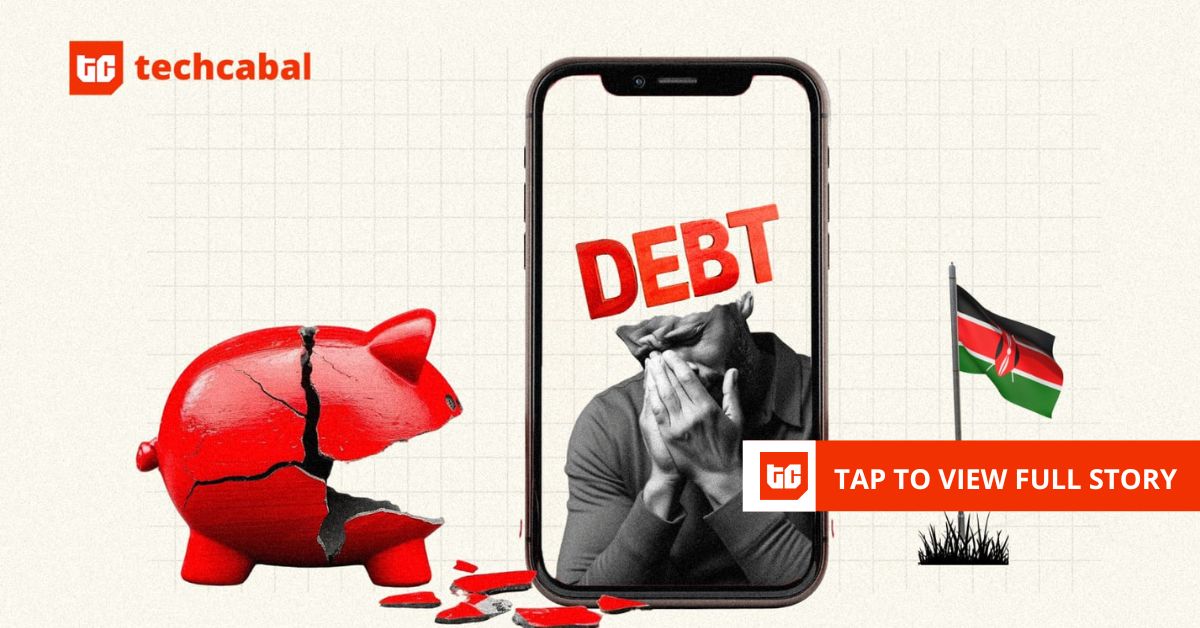When Grace Achieng’, a vegetable vendor in western Kenya, signed up for a Vivo smartphone on a Buy Now, Pay (BNPL) plan, it felt like a lifeline. With no deposit and weekly instalments of $2.71 (KES 350) or $0.39 (KES 50) daily, the deal was attractive: pay in bits, own the device, and stay connected with your friends and relatives. Three missed payments later, her device was remotely disabled.
“Imagine your only way of sending money or calling family getting locked,” says Achieng’. “It’s an inconvenience that forces you to borrow from other people or lenders. That’s an additional cost.”
Unlike traditional asset finance, which involves lengthy forms, background checks, and slow approvals, BNPL offers instant credit with a few clicks. The ease has made this form of asset financing popular, especially among younger consumers. But the same ease that brings people in has led to a debt regret facing users like Achieng’. Many users find themselves stuck in repayment cycles they did not fully anticipate, a debt trap disguised as convenience.
BNPL offers deferred payments for customers who would otherwise be excluded from credit. The appeal is undeniable in a country where formal lending is scarce and most people survive on irregular incomes.
However, for many customers in rural Kenya, the fast-growing consumer credit looks more like a risk than a help. BNPL is drawing scrutiny for its opaque terms, digital lockouts, and aggressive collection tactics, especially in a country like Kenya, where regulation lags behind innovation.
The trap
In principle, BNPL offers deferred payments for low-income customers who would otherwise be excluded from credit. In rural Kenya, where formal lending is scarce and most people survive on irregular incomes, the appeal is undeniable.
Startups backed by global venture capital have rushed to fill the rural credit gap, offering solar kits, motorcycles, phones, and household electronics under flexible payment terms. Instalments can be as low as $0.77 (KES 100) per week, and customers can sign up with just a national ID and mobile number.
But beneath the ease of entry lies a model increasingly reliant on digital coercion. BNPL platforms use sleek design and persuasive messaging to keep users spending. Push notifications and SMS reminders often dress up new credit as “pre-approved” or frame repayments as part of exclusive offers, pushing customers toward repeat borrowing with the language of opportunity rather than caution.
The result is a user experience engineered for ease, which can quietly lock consumers into a cycle of debt.
“These companies are not selling mobile phones or motorcycles, they are selling debt at high interest rates,” says Gad Awuonda, a Nairobi-based lawyer and consumer-rights advocate. “I have met customers who do not even fully know what happens when they fail to pay.”
The challenge is that BNPL startups like Aspira, Watu Credit, MOGO, Buy Simu Technologies, SunKing, and FlexPay Lipia Pole Pole operate with few regulations that govern formal lenders like commercial banks and microfinance institutions. Many are not registered as financial institutions and, therefore, are not subject to Central Bank of Kenya (CBK) oversight.
None of the BNPL providers responded to requests for comments.
Regulatory grey zone
Since 2021, CBK has been scrambling to create sanity in the digital lending and BNPL sectors, requiring licensing and data protection compliance under the 2021 Digital Credit Providers (DCP) regulations. The regulator also wants to repeal the outdated Hire Purchase Act 1968 —originally designed for furniture and car sales — to allow new legislation covering BNPL.
The regulatory grey zone has left consumers exposed. Few understand how much they are ultimately supposed to pay or what recourse they can take when locked out or facing repossession.
Disclosures on interest rates — often in the 30– over 100% annualised range — are rare. Contracts are short and largely unread if presented at all. For example, an electric scooter priced at $851 (KES 110,000) in cash can end up costing nearly twice as much under a BNPL arrangement once interest and fees are factored in.
For rural users unfamiliar with structured credit, the consequences of default can be harsh.
A spot check by revealed that BNPL startups disable devices after two to four missed payments, in some cases without notice. While some of the companies market the lockouts as a gentle nudge toward repayment, it is punitive in rural areas where mobile phones and motorcycles serve as financial lifelines.
“Most young people who are unemployed buy motorcycles in instalments, expecting to earn some income. What happens when it is switched off or worse, when repossessed,” says Awuonda.
Across the country, dusty yards are filling up with thousands of repossessed motorcycles, fridges, and televisions, seized from defaulters and auctioned off by BNPL companies struggling to recover their money.
“Modern hire purchase models thrive on information asymmetry,” says Dennis Oduor, a banker based in Kisumu, a city 400km west of Nairobi. “In urban areas like Kisumu, you might have options such as working on a construction site for daily wages. In rural areas, people feel trapped.”
Like any VC-backed firm, BNPL startups are under intense pressure to show revenue growth to satisfy global investors. In 2023, African BNPL platforms raised over $200 million in equity and debt funding, most of it to expand customer bases and explore new markets.
Increased investor appetite could mean aggressive onboarding and even more aggressive enforcement. The BNPL payment market in Africa is forecast to reach $5.34 billion in 2025 and over $10 billion in 2030. For many Kenyan rural users, the expansion could mean more pain.
“We cannot have people who are lending and not regulated by any financial regulator. That’s a ticking time bomb,” says Awuonda.
If Kenyan regulators can catch up with innovation, the BNPL startups could still deliver on its promise without trapping the millions of unbanked rural users it aims to help.









